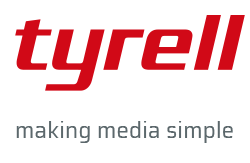Cloud editing costs demystified
AWS blog authored by Stephen Tallamy, CTO, EditShare.
Cloud-based video editing has quickly evolved from vision to reality, accelerated by a pivot to remote workflows brought on by the global pandemic. As facilities and on-premises workstations sat idle and post houses faced supply chain delays in procuring kit, editorial studios, teams, and freelancers began exploring new ways of working to keep teams safe and productions on track. Now that many studios have begun experiencing the benefits of cloud-based editorial pipelines, there’s no turning back, and for studios yet to make the leap, there’s no better time than the present. New technologies are emerging and converging to make cloud editing more accessible, and the cost benefits they introduce might just surprise you.
Unlocking cloud potential
Before diving into the costs of cloud editing, it’s important to look at the unique value proposition it brings to the table. Content must be in the cloud to be edited in the cloud, and centralizing storage and asset management in the cloud lets studios more easily track files and project work across post production pipelines. Editorial workstations can quickly be spun up on demand, so you’re not building and purchasing on-premises equipment to support project peaks, which can lead to wasted resources when systems aren’t fully utilized. With the cloud, appropriately equipped edit suites can be turned on and off, so studios only pay for what they use, and editors can work from anywhere, broadening the available talent pool a studio can leverage.
Streamlining a secure, cost-efficient path to cloud-based editing
While some studios opt to build their own cloud-based editorial workflows from scratch, managed solutions, such as Tyrell Cloud, provide a streamlined approach. Designed to help productions migrate to the cloud without any technical experience, the cloud platform is built on proprietary and partner technologies and Amazon Web Services (AWS) – including Amazon Elastic Container Service (Amazon ECS), Amazon Elastic Compute Cloud (Amazon EC2), Amazon Simple Storage Service (Amazon S3) and Amazon Virtual Private Cloud (Amazon VPC). It integrates with industry-standard tools, including EditShare FLEX for remote collaborative workflows and editing in the cloud.
With an EditShare account for shared storage, Tyrell Cloud users can quickly deploy new workstations on demand and adjust settings as needed, without losing any work. The Tyrell Cloud platform accelerates the ingest of content from on-premises drives into the cloud or content that is streamed directly from the camera. Once media lands in the Tyrell Cloud environment, EditShare provides the performance and shared storage for editors and an asset management layer to help facilities make sense of that content, allowing editorial teams to start work almost instantly.

Maximizing capacity, minimizing costs
Contrary to any preconceived notions that cloud implementations may be costly, insecure, or complex, most deployments often come in under budget, and are more secure and intuitive to set up than on-premises workflows, especially with the help of services like Tyrell Cloud. When planning for the cloud, companies often overestimate the amount of time a workstation is active. Editors may work 9am-5pm, but they’re typically not actively using a workstation (and incurring costs) the entire time. With traditional on-premises hardware, however, machines perpetually require air conditioning, power, and real estate, and are aging.
Taking a cloud-based approach, editorial deployments are faster, saving time and resources. Implementations that previously took six weeks or more to get up and running on premises can be done in nearly 24 hours. Working this way is also helpful for finance teams, as they can glean insights into their cloud spend and direct teams to course correct as needed and more accurately bid future projects. Companies also save on travel, shipping, and even air conditioning costs. There’s no need to fly people around the world to be present for review sessions that can be done virtually or for live events, which often require hefty gear transport.
A production company that recently deployed Tyrell Cloud and EditShare for the first time found it was able to deliver a new season of a documentary weeks in advance of historical timelines and under budget. Based on the project’s success, the company is looking at other ways it can benefit from a cloud-based editing workflow, such as accommodating project overlap to scale the business, which would not be possible with solely on-premises infrastructure.
Cloud-based editorial workflows also unlock new opportunities for pipeline innovation and automation. Rather than storing media on LTO tapes, the cloud provides a space where that media can deliver additional value. For instance, cloud-powered artificial intelligence (AI) and machine learning (ML) applications can help automate transcription and translation of media stored in the cloud to give the editorial team a rough idea of the script to inform the cutting process. They can also streamline object detection, which is crucial when studios own large amounts of archive footage, especially in the case of sports and news, or automate previously manual tasks like finding the timestamp where a particular reality show participant appears in the timeline.
To minimize egress costs, move only the data you’re planning to use into the cloud. However, if media must move again, rest easy that it won’t be massive raw files. With Tyrell Cloud, media is streamed at a very low cost; all the raw footage lives in the cloud and can remain there indefinitely. The only material that will move again is the final edit, and even that might not exit the cloud. It could effectively not leave the cloud until it’s delivered in the distribution chain, but even at that point, it’s no longer hundreds of terabytes of raw footage.
Real-world applications
To date, many TV productions have used Tyrell Cloud with EditShare FLEX to create, pause, and delete editorial workstations across projects. Private colleges with large-scale media labs are also leveraging the solution to ensure student access to the latest software upgrades and better tailor resources to accommodate lab schedules. Furthermore, with deployable technical infrastructure and accurate cost modelling, training organizations like Creative Media Academy Ireland (CMAI) are tapping the solution to run educational courses with more flexibility and to only deploy technology as needed.
For instance, CMAI leveraged a Tyrell Cloud account to launch a pair of redundant HP Anyware (Teradici Servers), 12 virtual workstations, storage, and NLEs in a matter of hours for a two-week educational training. The setup ensured each student received a workstation login and was online within CMAI or from the comfort of their home. Tyrell initially projected costs to run €4,232 – inclusive of a month-long Tyrell cloud subscription and running each system 8 hours a day for two weeks, but the actual amount came in less at €3,422. They arrived at this projection using automated cloud cost modeling powered by Tyrell’s unique IP. It merges the various M&E vendor subscription types and unit costs (GB/TB, User, Hours, Single Use) with live AWS costs to ensure that actual spend will be approximately 80% of the estimated cost.
From the lens of “Tarzan Economics,” the M&E industry has been swinging from the same on-premises vine for over a decade, but cloud-based applications in a range of environments are proving the value in reaching out for a new vine. Those who make the leap now stand to gain future advantages beyond our imagination.
Original article featured here: https://aws.amazon.com/blogs/media/cloud-editing-costs-demystified/
Contact the Tyrell Team to find out how Tyrell Cloud can revolutionise your production and post workflows sales@tyrellcct.com.


